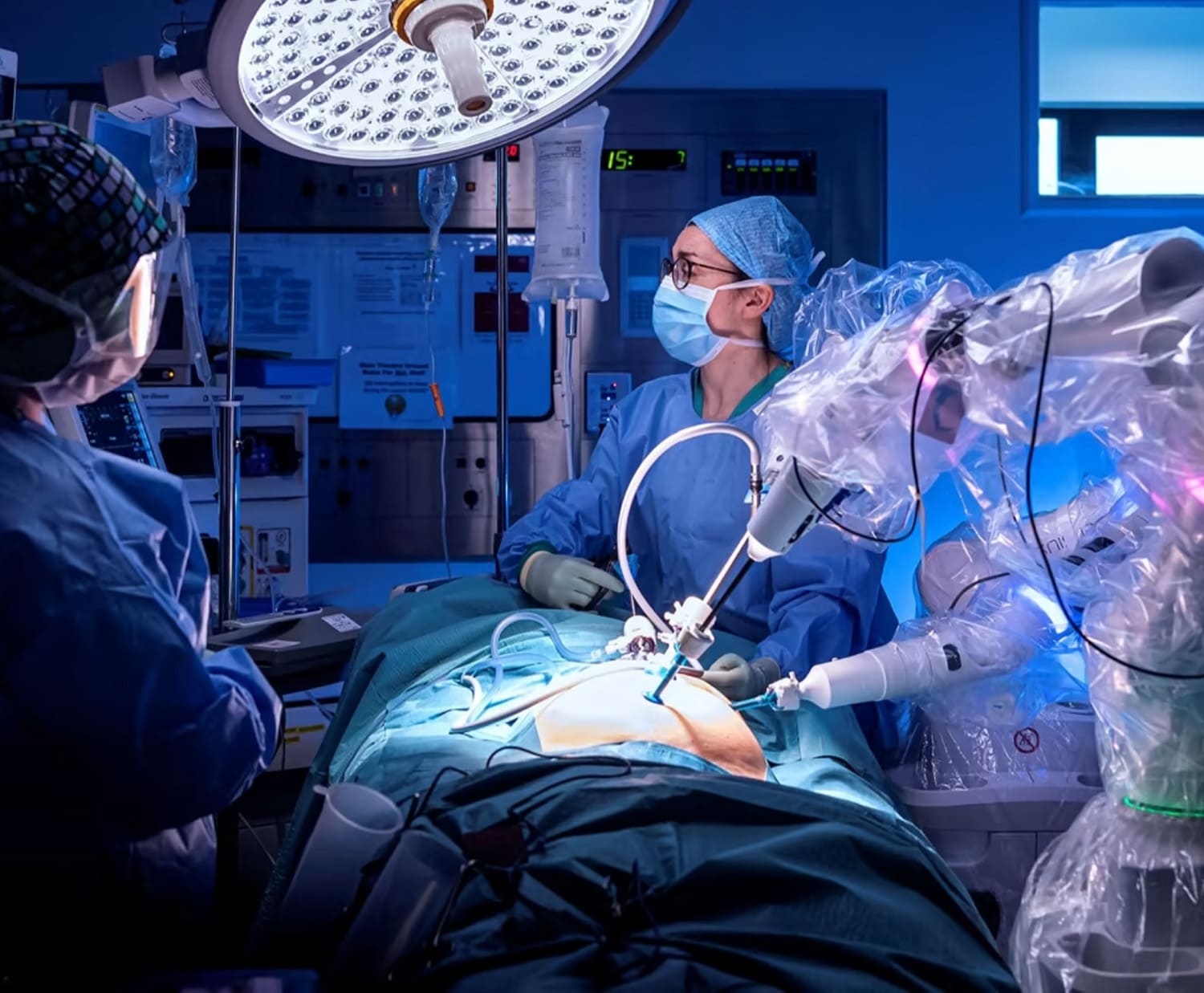Robotic Mitral Valve Repair/Replacement
Robotic mitral valve repair or replacement is a surgical procedure that involves using advanced robotic technology to repair or replace the mitral valve in the heart. The mitral valve is one of the heart’s four valves and is located between the left atrium and the left ventricle. Its function is to ensure that blood flows in the correct direction from the left atrium into the left ventricle during each heartbeat.
Here is an overview of robotic mitral valve repair/replacement:
Robotic Surgical System: The procedure is performed using a specialized robotic surgical system. This system consists of a console where the surgeon sits, robotic arms equipped with surgical instruments, and a high-definition camera that provides a detailed view of the surgical site.
Minimally Invasive Approach: Robotic mitral valve surgery is considered minimally invasive compared to traditional open-heart surgery. Instead of a large incision in the sternum (breastbone), the surgeon makes several small incisions (keyhole incisions) in the chest. By using this approach, there is a reduction in trauma to the surrounding tissues, which may result in faster recovery times and less postoperative pain.
Enhanced Visualization: The robotic system provides magnified, high-definition 3D images of the mitral valve and surrounding structures. This enhanced visualization allows the surgeon to perform precise movements and interventions during the procedure, such as repairing valve leaflets or placing annuloplasty rings.
Mitral Valve Repair: In cases where the mitral valve can be repaired rather than replaced, robotic surgery offers advantages. The surgeon can use robotic instruments to access the valve, repair leaflet abnormalities, remove excess tissue, or place annuloplasty rings to restore proper valve function.
Mitral Valve Replacement: If the mitral valve is severely damaged and cannot be repaired, robotic surgery can also be used to perform a mitral valve replacement. During this procedure, the damaged valve is removed and replaced with a mechanical valve, a bioprosthetic valve (made from animal tissue), or a tissue-engineered valve.
Benefits: The benefits of robotic mitral valve repair/replacement include smaller incisions, reduced postoperative pain, shorter hospital stays, faster recovery times, and improved cosmetic outcomes compared to traditional open-heart surgery.
Patient Selection: Not all patients are candidates for robotic mitral valve surgery. Factors such as the complexity of the mitral valve condition, the patient’s overall health, and the surgeon’s experience with robotic techniques will influence candidacy for this approach.
Postoperative Care: After robotic mitral valve repair or replacement, patients undergo postoperative care, including monitoring for complications, medication management, rehabilitation, and follow-up appointments to assess heart function and recovery progress.
Overall, robotic mitral valve repair/replacement represents a significant advancement in cardiac surgery, offering patients a less invasive option with potential benefits in terms of recovery, outcomes, and overall surgical experience. However, the decision to undergo robotic mitral valve surgery should be made in consultation with a qualified cardiac surgeon based on individual medical needs and considerations.

